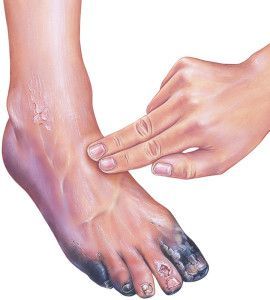
PERIPHERAL VASCULAR DISEASE
Peripheral vascular diseases (PVDs) are circulation problems that affect blood vessels outside of the heart and brain. PVD typically strikes the veins and arteries that supply the arms, legs, and organs located below your stomach. These are the blood vessels that are distant from the heart & therefore more affected by disease. As individuals age and develop plaques in their arteries, the vessels in the lower limbs become constricted and possibly obstructed. This leads to problems with blood flow to the legs and feet.
Certain conditions and life choices can lead to PVD. These include high blood pressure, diabetes, smoking, alcoholism, heart problems, obesity, poor diet, and lack of exercise. Some symptoms of PVD in the foot and ankle include discoloration and excessive dryness in bilateral feet and ankle, skin changes in bilateral feet and ankle, lack of ability to heal simple cuts and fissures in the foot and ankle, feet that are cold to touch, and many other symptoms. Some patients may even notice the discomfort when walking quicker, with more exertion, or for long distances. The pain will intensify with activity and subside when they rest.
Complications from undiagnosed and untreated PVD can be serious and even fatal. The restricted blood flow of PVD can be a warning sign of other forms of vascular disease. When arteries leading to the heart and brain become clogged with plaque, it can cause heart attacks, strokes, and loss of limbs.
Treatment Options
To diagnose PVD a podiatric physician will begin with a complete medical history and physical exam. Several diagnostic tests can be ordered to be able to diagnose the condition. Oral medications may also be provided for the treatments of some of the symptoms, including pain. Furthermore, precautions can be provided to prevent the creation of ulcerations. Additionally, other medical specialists can be recommended to help in the treatment of this condition.
If you are experiencing any of these symptoms, please contact Southwest Austin Foot and Ankle Clinic to schedule an appointment.



